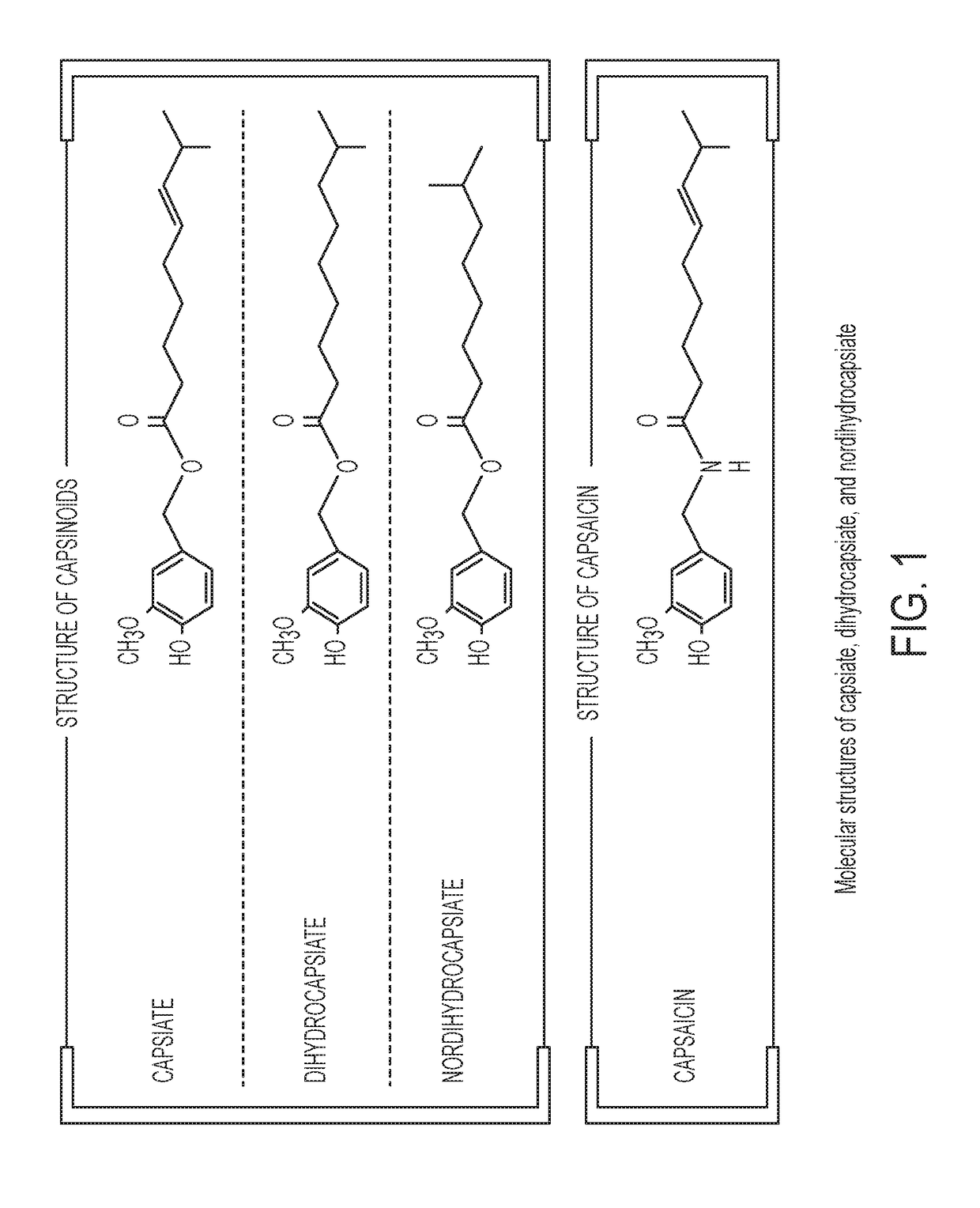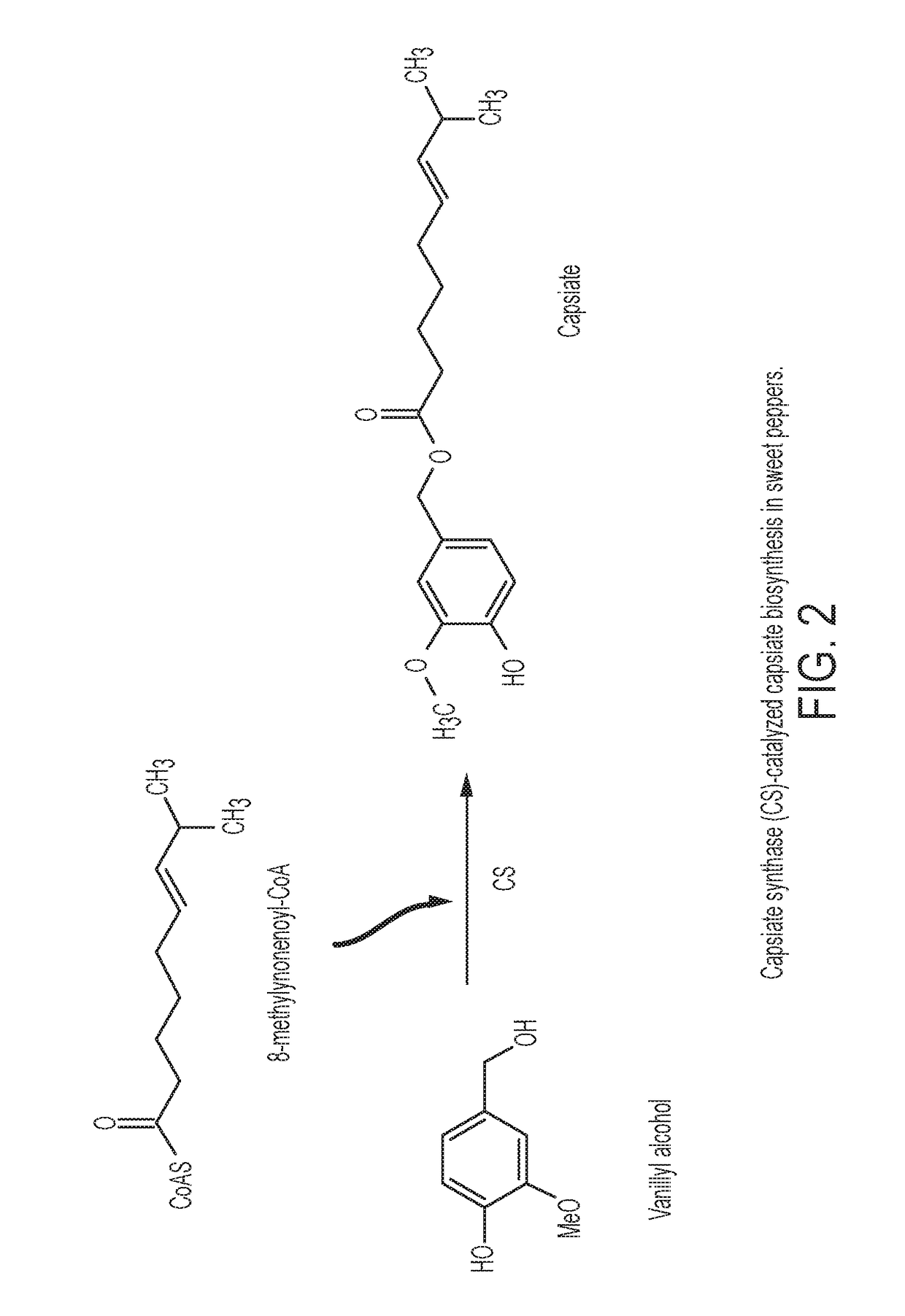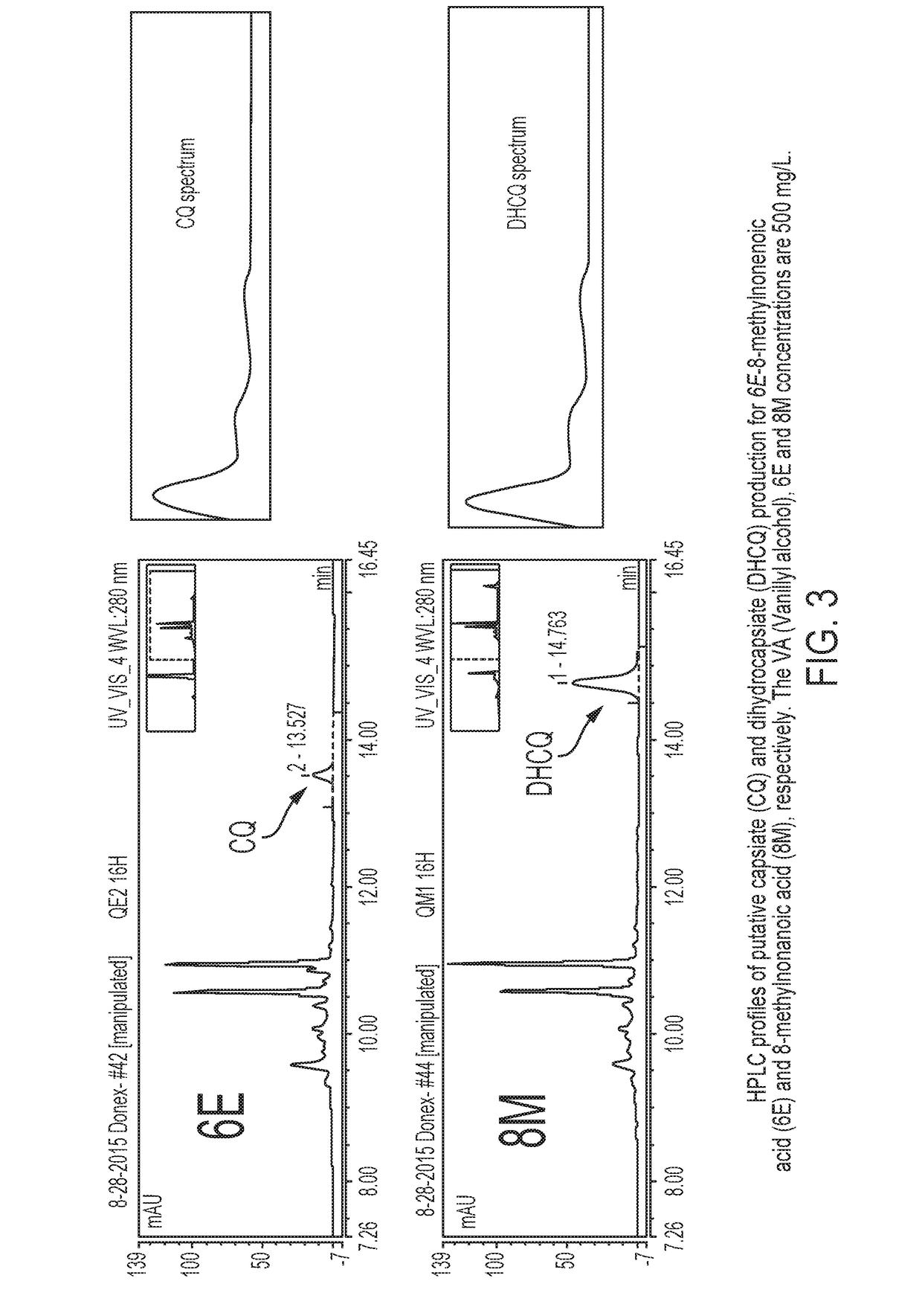Methods of making capsinoids by biosynthetic processes
a biosynthetic process and technology of capsicum are applied in the field of making capsicum, which can solve the problems of high price of capsicum extracted from sweet peppers, and strong pungent capsaicin
- Summary
- Abstract
- Description
- Claims
- Application Information
AI Technical Summary
Benefits of technology
Problems solved by technology
Method used
Image
Examples
examples
Production of Capsinoids in E. Coli
[0069]ACS1 and AT3 / Pun1 genes from ghost chili pepper were co-overexpressed in E. coli BL21(DE3) cells as previously described (see, e.g., PCT Application Publication No. WO2015 / 066615, the contents of which are herein incorporated by reference in their entirety). Plasmid pCDFDuet-ACS1 was used to transform competent E. coli BL21 (DE3) cells. The transformed cells were selected on LB plates containing 100 mg / L of spectinomycin. The resulting BL21(DE3) cells harboring pCDFDuet-ACSI were used for a second transformation with pETite N-His SUMO-ghost Pun1 vector. The transformants were selected on LB plates containing 50 mg / L of kanamycin and 100 mg / L of spectinomycin. The ACS1 and AT3 / Pun1 coding sequences used to co-overexpress ACS1 and Pun1 in the transformants are shown below:
Sequence of Pun1 / AT3 coding sequence (from ghostchili pepper)(SEQ ID NO: 3)ATGGCTTTTGCATTACCATCATCACTTGTTTCAGTTTGTGACAAATCTTTTATCAAACCTTCCTCTCTCACCCCCTCTAAACTTAGATTTCACAAGCTA...
PUM
| Property | Measurement | Unit |
|---|---|---|
| Fraction | aaaaa | aaaaa |
| Fraction | aaaaa | aaaaa |
Abstract
Description
Claims
Application Information
 Login to View More
Login to View More - R&D
- Intellectual Property
- Life Sciences
- Materials
- Tech Scout
- Unparalleled Data Quality
- Higher Quality Content
- 60% Fewer Hallucinations
Browse by: Latest US Patents, China's latest patents, Technical Efficacy Thesaurus, Application Domain, Technology Topic, Popular Technical Reports.
© 2025 PatSnap. All rights reserved.Legal|Privacy policy|Modern Slavery Act Transparency Statement|Sitemap|About US| Contact US: help@patsnap.com



